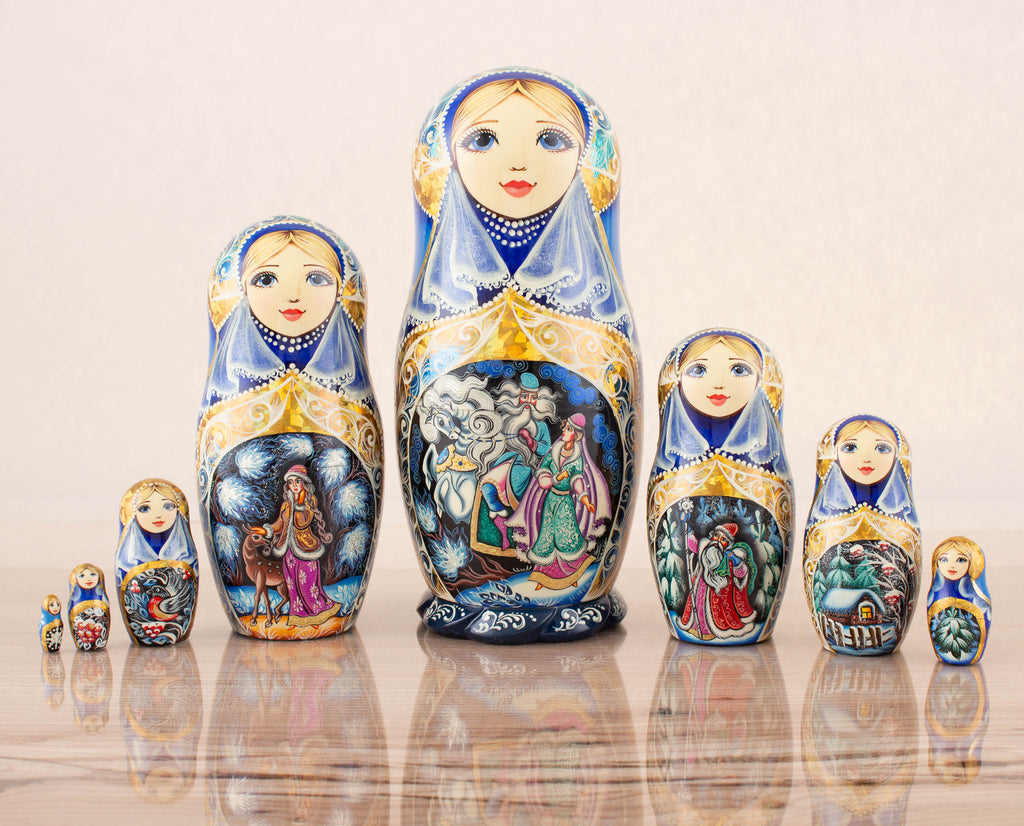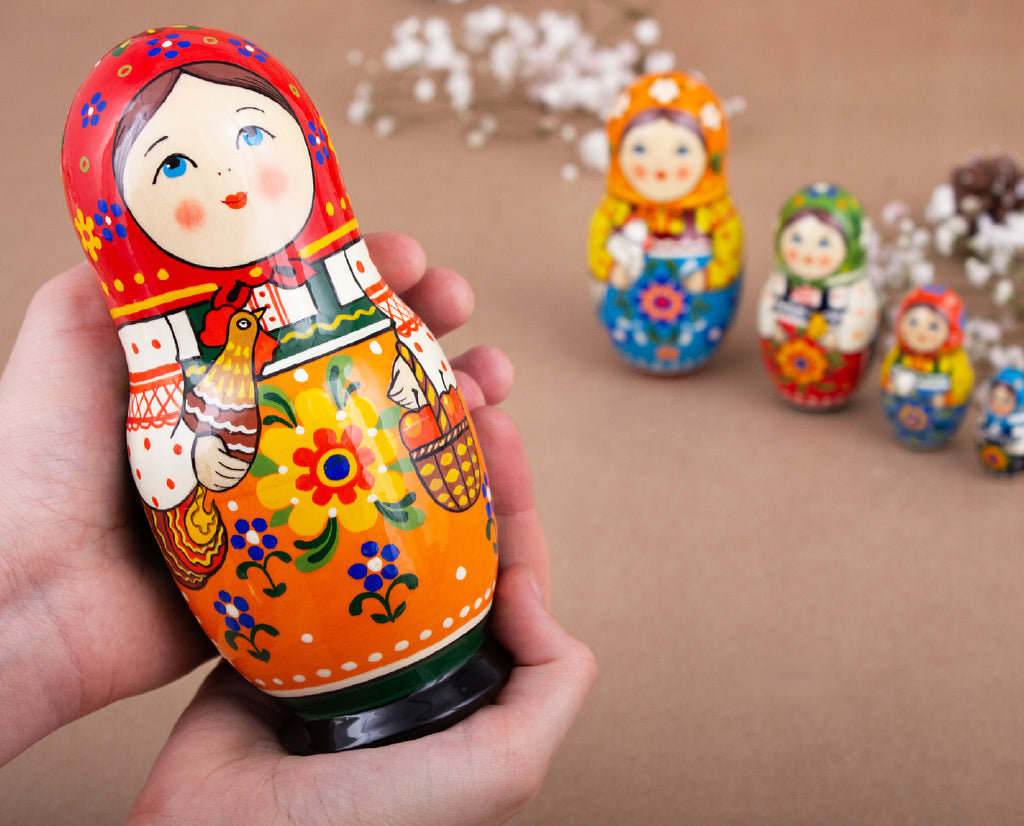In Russia, we dive straight into business then exchange pleasantries later. Saddle in! this may be a bumpy ride. Here are some facts you must know as a Russian nesting doll enthusiast.
1. Matryoshka dolls are native to Russia
Many people know Matryoshkas as a set of wooden dolls with diminishing sizes placed in another. Even Hollywood movies like Transsiberian are about the trans-Siberian rail journey and a set of Matryoshka dolls.
2. The Matryoshka has many names
Matryoshka dolls are are also known as nesting dolls, babushka dolls, matrioshka, and stacking dolls. The term Matryoshka originates from the russian word 'Matryona' (Матрёна) which translates to matron.
3. Dolls from the East
 Many believe that the first nesting doll was brought from Japan in the 1800s by Savva Mamontov's wife. Mamontov was a Russian patron of the arts. The rumors say that Mamontov asked the Russian artist and woodturner Sergei Malyutin to create something similar to the traditional Japanese dolls.
Many believe that the first nesting doll was brought from Japan in the 1800s by Savva Mamontov's wife. Mamontov was a Russian patron of the arts. The rumors say that Mamontov asked the Russian artist and woodturner Sergei Malyutin to create something similar to the traditional Japanese dolls.
However, many art collectors and patrons that the matryoshka nesting doll is uniquely Russian, although influenced by the Japanese dolls. The latter was based on the Russian tradition of making detachable Easter eggs.
4. The First Nesting doll had eight pieces
The first-ever nesting doll set consisted of eight dolls. The largest doll portrays a woman with a rooster, and the smallest doll depicted a baby. All inner dolls were children—five girls and one boy.
5. The Matryoshka Doll is symbol of motherhood and fertility
Throughout history, the picture of the happy peasant woman who characterizes the Matryoshka symbolizes fertility in various cultures.
From Ancient Greek Paleolithic Venuses to figurines that archeologists discovered in many European countries and to the Chinese, Japanese and Indian dolls were created in a similar fashion.
6. Different designs over the years

After the Bolshevik Revolution, Matryoshkas in the 1920s depicted Soviet workers in different trades and historical figures like Lenin.
In the 1930s, the Soviet government took Matryoshka dolls' production and set up factories in different regions.
A famous Soviet Matryoshka depicts the Soviet Union's different ethnic groups. The largest doll shows a bearded peasant, then his wife in a yellow headscarf, with subsequent dolls depicting figures from Ukraine, Belarus, the Caucasus, and Central Asian nations progressively smaller.
Under the Soviet Union, the Matryoshka evolved into a mass-produced souvenir and a symbol of the Soviet people.
7. Custom Dolls are in style

Today, Matryoshkas have both political and religious designs. Some doll manufacturers of Russian nesting dolls capitalize on its popularity by offering personalized matryoshkas to its customers.
Custom nesting dolls are always in style, making them an ideal family or personal talisman. Nowadays, nesting dolls often feature sports teams, Russian and Soviet leaders, or pop stars.
As always, you can shop authentic handmade nesting dolls by visiting our homepage. Let us know if you have any questions or custom order ideas.






